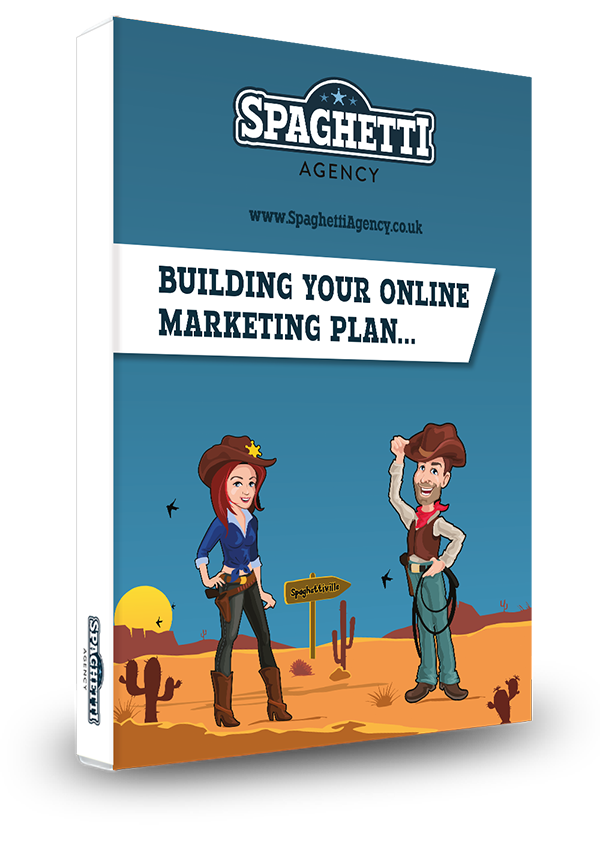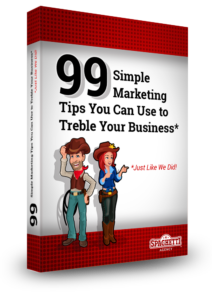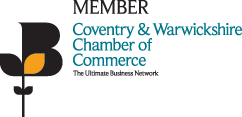Friday Digital Roundup
The Friday Digital Roundup is a witty take on the weird world of the internet. With fun stories from around the globe, it’s the only email newsletter you’ll actually read and enjoy!
We do love writing it, but clearly not as much as people like receiving it - just look at the response we got when a technical hitch meant it wasn’t sent out on time!
@Spaghetti_Jo
Coffee and the FDR is how I start my Friday.
Do not engage until I have devoured both
When it comes to the end of the week, there is no better way to start a Friday than with a run around the internet with Todd and Jo in the FDR. Just don't let them know I do it from the loo!
@Spaghetti_Jo
My inbox is full of rubbish newsletters that Im constantly deleting😬 My VIP inbox is for 1 thing only- THE DIGITAL ROUNDUP🤠I dont read a Newspaper or the news online, I just wait for Fridays, when this lands in my inbox- then I know ‘The weekend has landed’🤗
Get the Friday Digital Roundup and see what everyone’s talking about.
We may look like cowboys, but we’ll never abuse your data! Find out what we’ll do with it here, partner.
Spaghetti Blog
The Essential Digital Marketing Guide For Small Businesses
Businesses everywhere are scrambling to keep up with the ever-changing landscape of digital marketing.
How we advertise has changed forever and if you’re running a small business you’re faced with the challenge of keeping your business in people’s minds and in front of their eyes.
For many larger businesses it’s a case of throwing money at it and testing what does and doesn’t work. For smaller businesses though, your time is what you throw at it – and that’s far more precious.
We’ve been running our business and marketing it for almost four years now. So we thought we’d give you a list of must-have weapons in your marketing arsenal.
The essential digital marketing guide for small businesses
1. Twitter
Twitter is a powerful networking tool and if you’re not tweeting for your business then you should start. Twitter is all about conversation though, so don’t join it and start selling – that’s a classic mistake.
Twitter is live and interactive communication about everything and anything. You will be able to find conversation about your product or business. Having an opinion and offering value to those conversations is where the good stuff lies.
You can also get some great traffic to your website as well as show people more of what you’re about by telling your story as you grow and build your business.
Twitter rocks for events and live occasions too. Take your smartphone to all your public outings and share the relevant content and updates with your audience. Hashtags and images work well.
Things that work on Twitter:
- Useful content like tips and advice about your business.
- Articles or blogs shared from you or others.
- Networking (like in real life but online).
- Pushing traffic to your website.
- Fun content and topical conversation that links to your business.
- Live events – become your business’ roving reporter!
- Early morning and early evening posting. There’s a lot of action in the morning on Twitter and if you have a new blog to share then do it early to catch the commuters. Late evening is good also but then after 8-9pm it tends to get very chatty and not as powerful for businesses.
- Large images! Twitter now shows large and also multiple images. Smart tweeters take full advantage of this new visual trend in social and add images to their posts.
2. Facebook
The largest social media network has been going through a massive change recently. Now it’s more about pay to play, with the advertising option being the only way to reach all of your audience.
But Facebook is still one of the most engaged platforms from a user’s perspective. According to a recent study, 23% of Facebook users log in 5 times a day! This makes it a engaged network in anyone’s eyes – especially when you consider only 45% of Twitter accounts are active.
Facebook does have the advertising shadow hanging over it for marketers, but there are some people who boast massive success from Facebook ads. Check out Jon Loomer and his really insightful blog.
We have had some successes with targeted advertising, but don’t be fooled into ‘boosting’ posts as that always seems to give you nothing in return (except nice impressions stats, which are pointless if you don’t get actual interaction).
What works on Facebook:
- Posts with images. It sounds obvious but images on posts are really important on Facebook. Always have been; always will be.
- Posts that ask for engagement. Your posts will only ever be shown to a small number of your fans, so engaging them every time is so important. Keeping your fans liking, commenting and sharing should be high on your marketing agenda for Facebook.
- Advertising. It does work if you use the more comprehensive advertising. There are different options and the Power Editor is by far the best, if a little buggy and non-user friendly.
- Late night posting. Facebook users seem to be more interested later in the day. You get some great stats with Facebook insights, so learn when your audience are there, and post at that point.
- Auto-play video. It’s annoying for users, but as a marketer you can make sure that you have a chance for your content to be viewed. This option can be turned off but not many people know how.
3. Google+
Stop pulling that face – Google+ is important, OK?!
Google are determined that Google+ is going to be a player – and in fact in many areas it is performing better than the big guns above. I won’t get into stats on how many users there are and how engaged they are, as they’re all open to opinion. Let’s just look at why it works for your business.
Google+ is good for your search engine ranking. Unfortunately, because of this it has attracted a large number of businesses who have just set up camp and left it. It’s good to claim your business name on social media platforms but you’re missing the point of Google+ if you just sign up and check it once a month.
Google+ aims to make online content connected to the user, the business and the website that it’s published on. Google Authorship is a powerful tool in any businesses search engine marketing and the Google+ Places link with business Pages is a powerful way to dominate your brand search results in Google.
One of the important things to note is that Google are obviously watching interaction on Google+. If a post gets a lot of plus 1s (a share similar to a RT on Twitter or a like on Facebook) it gives the post a better chance of ranking well. Not only that, but if you Google something and someone in your Google+ circles has written an article on that subject, they will come up on the first page of Google with it.
Google+ is all about the connected internet and it links the businesses Page with its geographic location on Google maps and adds in its content and its website. This stuff matters to Google, so if you have a website and you want it to rank well it should matter to you.
Of course you must actually use Google+ to benefit the most. Join communities and build an engaged audience just like you do on other networks. If people are engaged they will share your content and plus 1 your posts, and this will help your profile get around to more people.
Things that work on Google+
- Communities – join and contribute to communities. Find like-minded people and share your content and posts with them. Take an interest in their content too, and don’t forget many of these communities have strict rules so check them first.
- Images and Gifs. Google+ is a very visual social media platform. Get creative and start sharing posts with highly engaging and relevant visuals. Google+ has many tricks up its sleeve and sharing images direct from your Google Drive is just one of them.
- Linking all you have. Use a Google+ Page for your business and link it to your Google+ Place listing and then link this to your website and then link your blog posts to your contributor link. It’s all about owning your content and being accountable, and it’s worth its weight in SEO gold!
- Hashtags. You know all about these right? Well Google+ hashtags work really well and Google+ will even automatically add hashtags to your posts too. Get your content into different places easily and find great content from them too.
- Auto-awesome. Google+ will, on occasion, add some bling to your images. At Christmas it adds snow, and running water will often move on the screen. I like the pointless tricks this adds to your timeline and your photos.
4. Mailchimp – email marketing
Email marketing is still vitally important! A list of email addresses is the most important thing a business should build. Social networks come and go but you will always have your list.
Regular updates, news, offers and constant communication are key to your marketing efforts. But how do you manage your list and make sure it’s all working well for you?
Mailchimp is a cool emailing platform. It’s simple enough to get into as well as having the depth to make it more complicated if you want to in the future.
With Mailchimp you can have different lists for different audiences and you can send out your email at the optimum times. You have the option to create sexy HTML emails and all this comes with live tracking so you can see open rates and clicks from your own dashboard.
There are hundreds of other fantastic options out there for marketers but for a small business I feel that Mailchimp offers the most user-friendly place to start. You can always export your Mailchimp list and put in onto another better system later on.
Things that Mailchimp can offer you:
- List management. You have to stay organised with email marketing. Mailchimp gives you full control and you can also see your most engaged recipients and the ones who bounce or unsubscribe. Create different lists so you can send targeted email to each list. Your emails need to appeal, but they won’t appeal to all. Learn from the stats and organise your subscribers into lists.
- Email capture made easy. Mailchimp gives you plenty of data capture forms that will embed on your website or even directly on Facebook apps. People who sign up will be automatically added to your lists for the next time you send and email.
- Reporting. The Mailchimp dashboard is great for seeing what works, who liked your content the most, who didn’t open it and when your best time to send is.
- Sexy designs. Although content and subject titles are important (Mailchimp can test those too) your design may be something your brand needs to have right. Mailchimp makes designing your email simple with drag and drop menu options.
- Scheduled emails. When people get your emails is important but you might not be free to send it at that time. Mailchimp allows you to schedule the email campaigns so you can be working away, driving or on holiday when your email goes out.
- High fives! Mailchimp gives you a high five when you send an email out – I like the style of the brand and the fun interactions make me smile. The interface is very user friendly and the helpful little chimp becomes your guide around the platform.
5. A business blog
If you have a website and social media then you need a blog too. A website can become stagnant, and in the world of ‘constantly updated quality content’ you need to make sure your website stays fresh!
A blog is the perfect way to show Google and your visitors that your business is alive and well and it also gives you great content to share on social media.
Blogging came under fire recently from a Google representative over guest blogging. Don’t worry; it was all blown out of proportion. Blogging on your own site is still a must for any business.
Blog about your subjects and services but offer value. A blog should give people something that they can use for themselves. It should educate them, entertain them, excite them, or inform them. A blog is not a sales tool and you should avoid using it as one.
Things a blog can do for your business:
- Blogging is still a powerful SEO tool. Regular updates with high quality content is something Google will respond to. It won’t happen overnight though, and you should leverage the power of social media to get your posts seen once they’ve been published.
- Blogging can set you apart from your competitors. Try to be the go-to person or business through your blog. Make an effort to blog often and about core parts of your business to show you’re an expert.
- Make your blog shareable. Have social share buttons that encourage readers to share the post. Most social share tools will update if the blog share is then RTd or reshared on Google+ or Facebook, LinkedIn etc., afterwards too. When you publish your new blog make sure you share it from your own social share buttons. A blog with lots of social shares looks great to visitors and Google alike!
- Blogging can open doors. I love discussing my blog content when I meet new people. It’s the obvious place to go on a website for me, and I’m always pleased when someone quotes a line or a title from my blog during a meeting or new connection.
- Blogging can help keep you creative! If you’re an author or someone who writes for a living then blogging is good ‘exercise’ for your mind. Blogging is fun and written in a more chatty style so you can just type away and flex your creative muscles!
6. SEO – Search Engine Optimisation (you got this!)
SEO is a HUGE and complicated subject but you can do some of it quite well all on your own (sssh, don’t tell anyone!).
SEO is basically helping your content show up higher on Google. Yes, there are other search engines – but seriously, Google owns search. Google changes its mind like we do our socks, so keeping up is a full time job. If you’re running a huge campaign or are in a really competitive industry then you will need to enlist the services of an SEO company.
But there’s good news…
Some SEO is simply making your site a better experience for visitors and more obvious to Google as well as engaging social media into the whole affair. If your site loads fast, navigates well, has a good quality and updated blog and you’re social about the whole thing, then you’re already doing some SEO.
Here’s some stuff to consider with your SEO that you can do right now:
- Good strong pages with single subjects. Don’t put all your eggs in one basket. Have a page per product, and make that page a quality one. Let’s say you sell mobile phones. Have a page for Apple, but make sure the iPhone 5s is on a different page from the iPhone 5 and if you still sell the iPhone 4 and 4s, they need their own pages too. Try to make sure that one page talks about one thing – otherwise your message is confusing and has less impact on Google. This is the same for services and other areas too.
- Headings are important. Include your keywords in your page headings and subheadings as Google looks here for clues about your page. This will help it rank better as well as help people skim your page.
- Images need descriptions. Images are a great way to break up a page or to give a better idea to your visitor about a subject or product, but Google can’t see. Name your images with a good description and give it a good ALT tag too. Google ranks pages in Google images too. It all helps and takes seconds.
- Google Analytics is FREE! Get this set up and start keeping an eye on what is happening on your website. You’ll soon be able to see poor performing pages and pages that excel, as well as pages where people convert more. Knowing what works and what doesn’t gives you the information you’ll need to make changes to your site – and that’s really good SEO.
- Make your site enjoyable and easy to navigate. Sites that people like will get more visitors and that’s a good signal to Google that this is something to show people. Google want to show its searchers the best of the best – so be the best! Have great content and clear navigation and make sure it’s obvious to people where they go next. Avoiding bounce (when people leave after one page) should be high on your website agenda.
- Get links from suppliers and relevant contacts’ websites. Links are still an important part of SEO but if you can’t afford to hire a professional to start outreaching for high quality relevant links then start small. You will work with and know authoritative companies and their websites will have a good ranking on Google (usually). Ask for a link from them. Use the relationships that you already have in your business and build it from there. Google uses links as a sign of authority and a link from a bigger site to your is a good indication that you’re important. Make sure you link from website that are relevant to you though and never buy them from directories or from an unknown online – keep it real!
Put it all together and you have a solid digital marketing machine that’s ready for battle
Digital marketing is an integrated effort, and using all these tools in unison is where the smart money’s at. Get a plan together and start working towards your main business goals and align your digital marketing alongside it. Don’t be that business that does a bit here, a bit there, some over there, and some on this. Plan it!
Of course this all takes time and effort and you have a busy business to run or work in. There’s help at hand though! We know what works from years of testing and running campaigns for other businesses like yours.
Tags associated with this article
Marketing Social MediaPost a comment
We'd love to know what you think - please leave a comment!






2 comments on this article
Diane at 19:28pm on August 9th 2014
Hi Jo & Todd,
This is a good article. I’ll definitely look in more detail at points on Twitter, Mail chimp & SEO’s in relation to my Pilates business – Pilates with Diane
Graham Todd at 8:58am on August 16th 2014
Thanks, Diane.
Local SEO would be very important for you. Look at using your town’s name in titles and headings and also make sure you have Google Maps set up for Places.